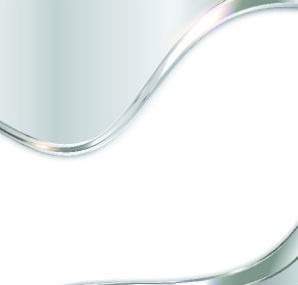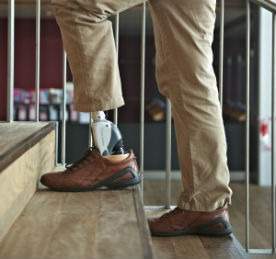
Hospital-acquired infections (HAIs) pose a significant challenge to patient care. With the increasing prevalence of antibiotic-resistant bacteria (‘superbugs’), infection control professionals are increasingly rethinking traditional approaches, and adopting novel technology and more-effective hygiene practices. Temporary indwelling devices, such as catheters and stents, tend to increase the risk of HAIs, as they compromise the natural physical barrier our bodies have against external bacterial flora at the use site.
For example, the use of urinary Foley catheters is frequently necessary after certain medical procedures. Bacteria can be transferred from these devices into the bladder and, in some cases, the kidneys. Urinary tract infections are the most common category of HAIs, and the majority of cases are traceable back to the use of indwelling devices.
Once acquired, HAIs are extremely difficult to treat, especially for weaker, immunodeficient patients, and can extend the post-surgery recovery period or result in readmission, which are extremely costly events in today’s healthcare system.
Therefore, for devices such as urinary Foley catheters, it makes sense to treat these products so that their surfaces exhibit antimicrobial properties. By creating an antimicrobial attribute on catheter surfaces, bacterial growth can be sharply inhibited, and the risk of catheter tubing serving as a contributive factor to bacteria transfer and infection is therefore minimised.
Precious metal
Urinary Foley catheters currently on the market include silicone offerings with a silver-containing coating. For this reason, silicone Foley catheters were chosen for study. The following sections outline the results generated in the two major types of medical-grade silicone used for catheters.
Silver-based antimicrobials have long been employed for creating antimicrobial attributes in medical devices. Silver is able to express wide-spectrum antimicrobial efficacy against Gram-positive and negative bacteria, and in some cases, yeast organisms such as Candida albicans. In addition, when properly employed, silver is noted for having negligible toxicity effects when interacting with human tissue and fluids. Typical silver antimicrobial technologies available include:
- Pure silver: the antimicrobial efficacy of these systems relies primarily on the ability of elemental silver to convert to silver cations. These include silver sols impregnated into bandages and dressings, and silver fibres that are woven into a fabric. Other variations include silver deposited or implanted onto device surfaces to form a coating.
- Silver salts: the use of silver chloride or silver sulphate is prevalent in textiles for odour and antibacterial control. The antibacterial efficacy of these systems is dependent on the dissolution of these silver salts into silver cations. Silver chloride tends to be topically applied, while silver sulphate can be extruded.
- Silver-cation-releasing systems: these systems typically exhibit the highest release of silver cations compared with silver metal and salts. They consist of a particulate structure capable of ‘hosting’ silver cations, which are released through the particle’s interaction with moisture and counter ions. These systems include silver-zirconium hydrogen phosphate, silver-zeolites and silver glass.
Within the area of silver-cation-releasing systems, the highest antimicrobial efficiency is typically derived from silver-glass systems. By varying compositional design, particle-size distribution, and other controllable parameters of silver-glass chemistry, an extensively varied silver-cation-discharge profile can be achieved to serve the particular needs of antimicrobial devices.
The tunable attribute helps ensure that critical levels of silver cations are present at the device/body interface for the duration of device use, which can extend over a week. Other silver-cation-releasing systems can have less controllability, and release profiles resemble exponential decay curves where silver-discharge levels rapidly fall below critical levels within days or hours.
Microbial growth
Microorganisms are capable of altering growth patterns in response to environmental signals. These signals can include but are not limited to nutrient concentrations, surface availability and the number of microorganisms present.
Without environmental signals, microbes exist as single-celled organisms not associated or interacting with other microorganisms and are termed planktonic cells. Planktonic cells have been studied since the discovery of microorganisms by Leeuwenhook and Koch’s founding of the germ theory of disease.
Recently, it has been determined that planktonic cells are not the most common growth state for microbes. Instead, microorganisms exist in multicellular and sometimes multispecies communities called biofilms. These communities are typically surface-associated, encased in a biologically derived polymeric matrix, and inherently resistant to antibiotic treatment regimens.
Biofilms can be found throughout nature, industry and hospital settings. In order to provide an efficient and effective antimicrobial activity, the ability of the antimicrobial device to control biofilm formation must be assessed alongside its ability to control planktonic cells. Biofilm build-up leads to encrustation and early removal of devices for patient safety reasons. Any device that reduces or retards such build-up increases patients’ quality of life and extends the lifespan of the protected product.
Currently, in the US, medical devices with antimicrobial performance claims have to be submitted to the FDA for approval, and biofilm performance is evaluated on a case-by-case basis.
Methods of evaluation
Initial studies using our silver technology in silicone were conducted in vitro to mimic a urinary tract infection that would occur on the seventh day of catheterisation.
To determine durability out to the seventh day of catheterisation, antimicrobial testing incorporated a seven-day soak in artificial urine. As well as this, since antimicrobials are inherently susceptible to inactivation by biological compounds, samples were exposed to heat-inactivated serum.
Efficacy was determined by calculating biofilm log reduction, where the log of the average colony-forming unit (CFU) of controls was subtracted from the log of the average CFU of treated samples.
Controls and samples were repeated in triplicate.
Evaluation of medically relevant silicone against planktonic bacteria
The antimicrobial silver technology was incorporated into a two-part high-consistency rubber (HCR) and liquid silicone rubber (LSR) silicone material at 5% and 10% levels respectively. These were then tested against multiple organisms, which were selected based on clinical relevance.
Current FDA antimicrobial guidance indicates that a 4-log planktonic reduction is required to make antimicrobial claims on products. The silver technology tested surpassed FDA-required log reductions, delivering a greater-than-7-log reduction for bacteria and a 4-log reduction on the Candida albicans yeast species for HCR.
Due to the prevalence of LSR in the medical setting, my team evaluated a wider array of organisms. For all species tested, the treated LSR was able to reduce the planktonic population by greater than 5-log compared with the untreated control sample.
The incorporated silver technology in the HCR and LSE was subjected to testing that allowed biofilm formation on control specimens. We reported significant biofilm reduction for every organism tested. The treated HCR was shown to be capable of reducing surface-associated microorganisms. The observed variance in log reductions between organisms is strictly due to the proclivity of the microorganism to form biofilms.
As such, organisms that preferentially exist as biofilms, such as Pseudomonas aeruginosa, exhibited higher log reductions than organisms with increased motility such as Proteus vulgaris. While additional experiments are needed to determine the bacterial state of growth, this indicates that incorporated silver technology has the capacity to prevent the early stages of biofilm development on the surface of the polymer.
Approximately two thirds of preventable HAIs are device-associated and can be classified into three main groups: central line-associated bloodstream infections, catheter-associated urinary tract infections and ventilator-associated pneumonia.
While the work presented here focused on testing that would mimic a urinary tract infection, the organisms selected to test against were the organisms most commonly associated with device-related HAI.
As HCR and LSR are common silicones throughout the medical field, these results are broadly applicable to multiple end-use scenarios. With the increased scrutiny being given to HAIs, the use of antimicrobial-treated products has the potential to reduce HAI infections.
The ability of incorporated antimicrobials to deliver strong antimicrobial attributes at the surface of HCR and LSR is demonstrated by the above examples. This is evidenced by multilog reductions in various microbes of silver-treated materials over untreated materials in planktonic and biofilm evaluation tests.






